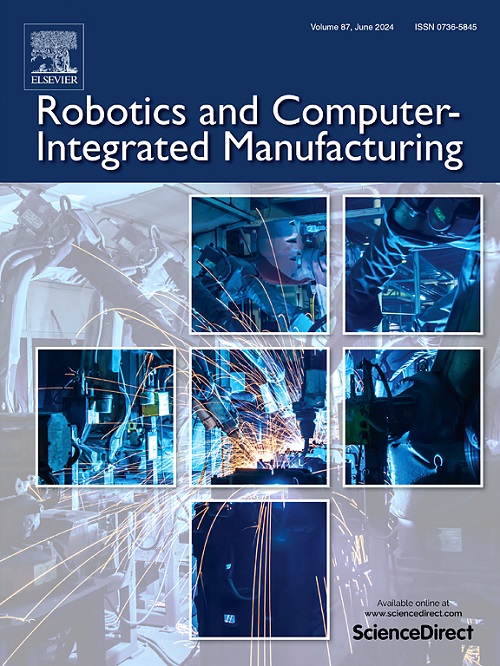Streamlined robotic hand–eye calibration of multiple 2D-profilers: A rapid, closed-form two-stage method via a single-plane artefact
IF 9.1
1区 计算机科学
Q1 COMPUTER SCIENCE, INTERDISCIPLINARY APPLICATIONS
引用次数: 0
Abstract
A 2D laser profiler is commonly utilized in high-precision robotic settings to capture detailed surface profiles for 3D scanning. By collecting and combining numerous such measurements from different viewpoints, it is possible to assemble a comprehensive 3D map. However, to effectively merge these individual 2D profiles into a singular global framework, the spatial relationship between the scanners and the robot’s reference frame is required. Traditional hand–eye calibration techniques typically necessitate specific calibration artifacts or extraneous positional sensors, and the process is either manually executed or only partially automated, demanding considerable time and effort. This paper introduces an innovative, closed-form approach to hand–eye calibration that can be applied to a single scanner or an array of multiple scanners. Our method circumvents the requirements for initial parameter estimates or specialized calibration implements, instead employing a flat plane for hand–eye calibration. This method paves the way for a fully automated calibration sequence comprising only three rotational and three translational poses, reducing the total calibration duration. This streamlined process has undergone strict experimental validation utilizing a calibrated sphere, proving its effectiveness not only with a solitary scanner setup but also with an ensemble of three scanners.
流线型机器人手眼校准多2d轮廓仪:一种快速,封闭形式的两阶段方法,通过单平面伪影
二维激光剖面仪通常用于高精度机器人设置,以捕获3D扫描的详细表面轮廓。通过收集和结合来自不同视点的大量此类测量数据,就有可能组装出一幅全面的3D地图。然而,为了有效地将这些单独的二维轮廓合并到一个单一的全局框架中,需要扫描仪和机器人参照系之间的空间关系。传统的手眼校准技术通常需要特定的校准工件或外部位置传感器,并且该过程要么手动执行,要么仅部分自动化,需要大量的时间和精力。本文介绍了一种创新的,封闭形式的手眼校准方法,可应用于单个扫描仪或多个扫描仪阵列。我们的方法绕过了初始参数估计或专门的校准工具的要求,而是采用一个平面进行手眼校准。该方法为仅包含三个旋转和三个平移姿态的全自动校准序列铺平了道路,减少了总校准时间。这种简化的过程已经经过了严格的实验验证,利用校准球体,证明其有效性不仅与一个单独的扫描仪设置,而且与三个扫描仪的集合。
本文章由计算机程序翻译,如有差异,请以英文原文为准。
求助全文
约1分钟内获得全文
求助全文
来源期刊
CiteScore
24.10
自引率
13.50%
发文量
160
审稿时长
50 days
期刊介绍:
The journal, Robotics and Computer-Integrated Manufacturing, focuses on sharing research applications that contribute to the development of new or enhanced robotics, manufacturing technologies, and innovative manufacturing strategies that are relevant to industry. Papers that combine theory and experimental validation are preferred, while review papers on current robotics and manufacturing issues are also considered. However, papers on traditional machining processes, modeling and simulation, supply chain management, and resource optimization are generally not within the scope of the journal, as there are more appropriate journals for these topics. Similarly, papers that are overly theoretical or mathematical will be directed to other suitable journals. The journal welcomes original papers in areas such as industrial robotics, human-robot collaboration in manufacturing, cloud-based manufacturing, cyber-physical production systems, big data analytics in manufacturing, smart mechatronics, machine learning, adaptive and sustainable manufacturing, and other fields involving unique manufacturing technologies.

 求助内容:
求助内容: 应助结果提醒方式:
应助结果提醒方式:


